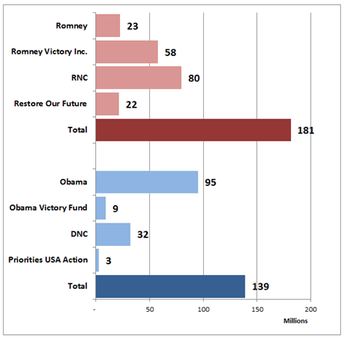While Mitt Romney spends this week overseas, there is considerable speculation about who he will select as his Vice Presidential running mate. There are many considerations that factor into this selection, especially in a race that is expected to be very close. In the old days, a presidential candidate looked for a VP who could provide balance – this could be regional, ideological, or even demographic. A VP candidate from a state with lots of Electoral College votes was a plus.
Who can provide the most effective balance for Mitt Romney? In order to answer that, we need to ask what kind of possible vulnerabilities Mitt Romney has that will matter in November’s election. For one, he could use someone to bolster the Republican party base, which probably means someone who is either a fiscal or social conservative – or ideally, both. At the same time, he would like to appeal more to independent voters (can you find a VP candidate who appeals to both independents AND your base at the same time?). What about women and Hispanics, both of whom haven’t been huge fans of Republican party presidential candidates in the past.
With many different factors possibly influencing Mitt Romney’s decision, I’ve tried to identify some likely candidates from what is a fairly large group of prospects. First, I don’t think any of Romney’s primary opponents will be selected. There’s too much bad blood with some of them, or they just don’t bring enough to the table for a general election campaign. Of all the primary candidates, I could see only Tim Pawlenty as a possible choice, but I see him as a long shot.
Beth Myers, head of the VP selection committee for Romney, recently publicly praised Bob McDonnell from Virginia (a battleground state), but I rule him out for that reason alone. Chris Christie from NJ has excited some voters, but he has moderate views on gun control and immigration, so I think he’s out too.
Ohio Senator Rob Portman could help win an important battleground state, and he would add some gravitas to the Romney campaign (Portman was former chief of the Office of Management and Budget). I read somewhere that he is fluent in Spanish – if true, that might help in key states such as Florida.
There’s lots more possible selections, but I’ll end this by mentioning Florida Senator Marco Rubio. There’s been lots of positive buzz about Rubio so far. He’s from Florida (a battleground state with lots of Electoral College votes), and he has a good reputation with senior voters. His Hispanic background could appeal to Hispanic voters in other key states too. He and Romney haven’t seen eye-to-eye on immigration, but immigration is a party-wide problem. With Hispanics, Rubio might help the overall Republican brand by joining the ticket.
Of course, Romney could pick someone who will be a huge surprise – did anyone predict that John McCain would select Sarah Palin in 2008?
What other choices would help bolster the Romney campaign?
John Klemanski
Who can provide the most effective balance for Mitt Romney? In order to answer that, we need to ask what kind of possible vulnerabilities Mitt Romney has that will matter in November’s election. For one, he could use someone to bolster the Republican party base, which probably means someone who is either a fiscal or social conservative – or ideally, both. At the same time, he would like to appeal more to independent voters (can you find a VP candidate who appeals to both independents AND your base at the same time?). What about women and Hispanics, both of whom haven’t been huge fans of Republican party presidential candidates in the past.
With many different factors possibly influencing Mitt Romney’s decision, I’ve tried to identify some likely candidates from what is a fairly large group of prospects. First, I don’t think any of Romney’s primary opponents will be selected. There’s too much bad blood with some of them, or they just don’t bring enough to the table for a general election campaign. Of all the primary candidates, I could see only Tim Pawlenty as a possible choice, but I see him as a long shot.
Beth Myers, head of the VP selection committee for Romney, recently publicly praised Bob McDonnell from Virginia (a battleground state), but I rule him out for that reason alone. Chris Christie from NJ has excited some voters, but he has moderate views on gun control and immigration, so I think he’s out too.
Ohio Senator Rob Portman could help win an important battleground state, and he would add some gravitas to the Romney campaign (Portman was former chief of the Office of Management and Budget). I read somewhere that he is fluent in Spanish – if true, that might help in key states such as Florida.
There’s lots more possible selections, but I’ll end this by mentioning Florida Senator Marco Rubio. There’s been lots of positive buzz about Rubio so far. He’s from Florida (a battleground state with lots of Electoral College votes), and he has a good reputation with senior voters. His Hispanic background could appeal to Hispanic voters in other key states too. He and Romney haven’t seen eye-to-eye on immigration, but immigration is a party-wide problem. With Hispanics, Rubio might help the overall Republican brand by joining the ticket.
Of course, Romney could pick someone who will be a huge surprise – did anyone predict that John McCain would select Sarah Palin in 2008?
What other choices would help bolster the Romney campaign?
John Klemanski

 RSS Feed
RSS Feed